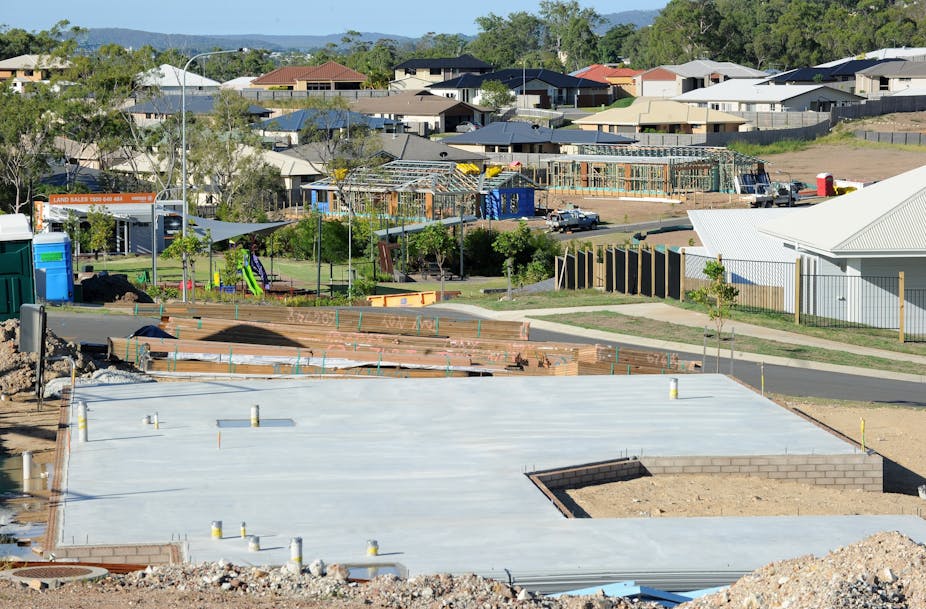A fundamental truism of economics is that if you tax something, you get less of it. Tax is thus a good place to start in seeking to explain why Australia’s housing market is chronically under-supplied, with adverse implications for housing affordability.
Many commentators have argued that housing is tax advantaged because of the principal residence exemption from capital gains tax. They see the exemption as a source of increased demand for housing and a negative influence on housing affordability rather than a boost to housing supply.
This leads to the incorrect conclusion that housing affordability could somehow be improved by abolishing the principal residence exemption and other tax concessions. For example, journalist George Megalogenis has written that “housing can only become more affordable if prices stop rising… It can only be done by making property less attractive than other investments, such as shares or superannuation… bricks-and-mortar should lose its taxpayer supports.”
The Henry Tax Review was commendable for rejecting the view that saving via owner-occupied housing should be taxed. The Henry Review favoured an expenditure tax benchmark that exempts the returns to saving from tax, including saving via housing. The final report’s recommendation that saving via owner-occupied housing remain tax-exempt was explicitly based on this benchmark. The final report also recommended that the returns to other forms of saving, including capital gains on other assets and net residential income and losses, should enjoy a 40% tax discount.
The Henry tax review made clear that the problem with Australia’s tax system is not that saving via housing is taxed too lightly, but that other forms of saving are taxed too heavily. The principal residence exemption from capital gains tax is in fact model tax policy based on an expenditure tax benchmark.
Henry’s suggested move to a 40% savings income discount is designed, among other things, to remove “the current bias towards negatively geared investment in rental property and shares.” However, this recommendation was made subject to the important proviso that supply-side constraints in the housing market need to be tackled first and that phase-in arrangements should apply to minimise disruption to the housing market.
The final report noted that “changing the taxation of investment properties could have an adverse impact in the short to medium term on the housing market… reducing net rental losses and capital gains tax concessions may in the short-term reduce residential property investment. In a market facing supply constraints, these reforms could place further pressure on the availability of affordable rental accommodation.”
The pre-occupation of many commentators with the principal residence exemption from capital gains tax and negative gearing has diverted attention from the fact that housing in Australia, far from being supported by the tax system, is in fact very heavily taxed. A recent report by private consultancy, the Centre for International Economics (CIE), “Taxation of the Housing Sector in Australia,” prepared for the Housing Industry Association, quantifies the tax burden and its adverse implications for housing affordability.
The tax burden on new housing includes direct taxes such as the goods and services tax, stamp duty, land tax and council rates, as well as a variety of indirect taxes on inputs into housing and hidden taxes that arise from the planning and approvals process. CIE estimate that these taxes account for 44% of the purchase price of a representative new home in Sydney or around $267,879. Most of the burden of these taxes falls on home buyers and not home builders because the demand side of the housing market is less price sensitive than the supply-side.
The tax burden on housing also accounts for much of the financing cost of a new home and thus the burden of mortgage debt and associated interest payments. The cost of financing the tax component of the price of a new house in Sydney is equivalent to 33% of the after-tax income of a young couple aged between 24 and 35 on average wages. The burden is even higher in the first year when stamp duty is paid, accounting for a staggering 72% of after-tax income.
Australia’s under-supplied housing market and housing affordability problem is largely due to the tax burden on housing. Abolishing the principal residence exemption from capital gains tax and negative gearing would only add to this tax burden and further reduce housing supply.
Substantial gains in the efficiency of the tax system and housing affordability could be achieved through the substitution of more efficient taxes such as the goods and services tax for inefficient taxes on residential property. CIE estimate that replacing taxes on housing with a broadening of the GST base could increase GDP by around 2% and increase residential construction by 14%, providing a much needed boost to housing supply.
The main obstacle to a reform of this type is the dependence of state and local governments on residential property taxes, accounting for around 40% of their total revenues. This points to the need for a federal-state compact on tax reform that finances the abolition of inefficient taxes on residential property through changes in the GST rate or base. State and federal governments unwilling to consider such a compact are not serious about addressing housing affordability.
The solution to Australia’s housing affordability problem is to build more and cheaper houses. This can only be achieved by easing the tax burden on housing and not through the abolition of existing tax concessions.

